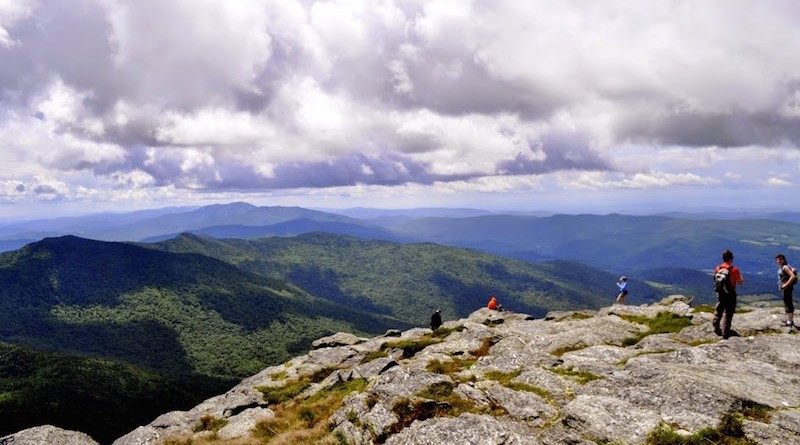Backcountry on Camel’s Hump?
The state’s department of forests is asking Vermonters to weigh in on the first new plan in a quarter-century for the 26,000-acre management area that includes Camel’s Hump State Park.
The plan as currently written would create new multi-use trails and new backcountry skiing glades. The plan also includes 34 timber harvests over 3,800 acres of forested land within the next 15 years.
The land the plan describes covers Camel’s Hump State Park, Camel’s Hump State Forest, Robbins Mountain Wildlife Management Area and Huntington Gap Wildlife Management Area.
The new ski glades are in part a response to public demand, and in part an acknowledgment that people are already cutting ski glades — thinning trees to enable passage on skis — on public land, said Michael Snyder, commissioner of Vermont’s Department of Forests, Parks and Recreation.
“It’s something I’m passionate about as a backcountry skier,” Snyder said, but the move to create state-sanctioned ski glades is also an attempt to put the brakes on private individuals who have been creating glades on public land without permission.
It’s illegal for skiers to cut glades on the public land surrounding Camels Hump without state authorization, said Jason Nerenberg, a stewardship forester with the department. Unauthorized glades established in the past near Jay Peak — poorly engineered, destructive and unattractive — illustrate in part why the department discourages this type of illegal activity, he said.
In contrast, the glades the Camel’s Hump management plan would authorize in the Bald Hill area near Huntington and the old Callahan Trail near Duxbury are going to be created with an eye toward preserving the forest canopy and discouraging erosion, Nerenberg said.
“We’re envisioning a light touch,” he said.
The department is still looking for groups to partner with in this glade-creating effort, Nerenberg said, such as the various backcountry skiing organizations spread around the state.
The plan also sanctions dozens of timber harvests over coming years, and Snyder said the logging will accomplish a great deal more than simply giving a shot in the arm to the state’s ailing forestry industry.
“All the values our state land provides are being subsidized” by these timber sales, Snyder said.
During the 25 years prior to 2015, the department harvested or authorized the harvest of 4.5 million board feet of timber and 7,700 cords of pulp and firewood through 18 separate commercial timber harvests covering approximately 1,745 acres around Camel’s Hump, according to the current plan. Those sales brought in $2 million in total.
That sum supplanted public funds that would have likely needed to come from taxpayers in some other form, Snyder said, and the monies supported a variety of things like trail work, signs and other modern forest features.
“We don’t need to manage the forests for the forests’ sake,” Snyder said. “We ask a lot from our forests, and timber is one way to pay for it.”
Most of the public timber stands in the Camel’s Hump management unit’s suitable acres are logged in accordance with a principle called “uneven-aged management,” Nerenberg said. This approach prohibits clearcuts larger than 2 acres, he said.
The Camel’s Hump Management Unit contains one of the largest contiguous pieces of land owned by the Vermont public, Nerenberg said. Vermonters possess it under the aegis of the state’s Agency of Natural Resources, he said.
In the past, the management unit’s four smaller tracts were managed separately. The plan currently out for public review treats them under a single management plan. This is not so much a change in management direction as it is a recognition of good forestry practices the department has supported for some time, Nerenberg said.
“It’s a recognition that landscape connectivity is an important principle when managing these large units,” he said.
The land sits inside one of the largest extant blocks of habitat in the state, Nerenberg said. Large, connected areas of intact forest are important for wildlife and other forest organisms, he said.
The department is soliciting public comments on the plan through Dec. 29, and the plan has been in progress since 2011, when the public was last asked to weigh in on it. Two public open houses have been conducted already in the latest round of public commenting, and a final open house is scheduled Nov. 29 in Duxbury
By Alan Keays, VtDigger.com;

